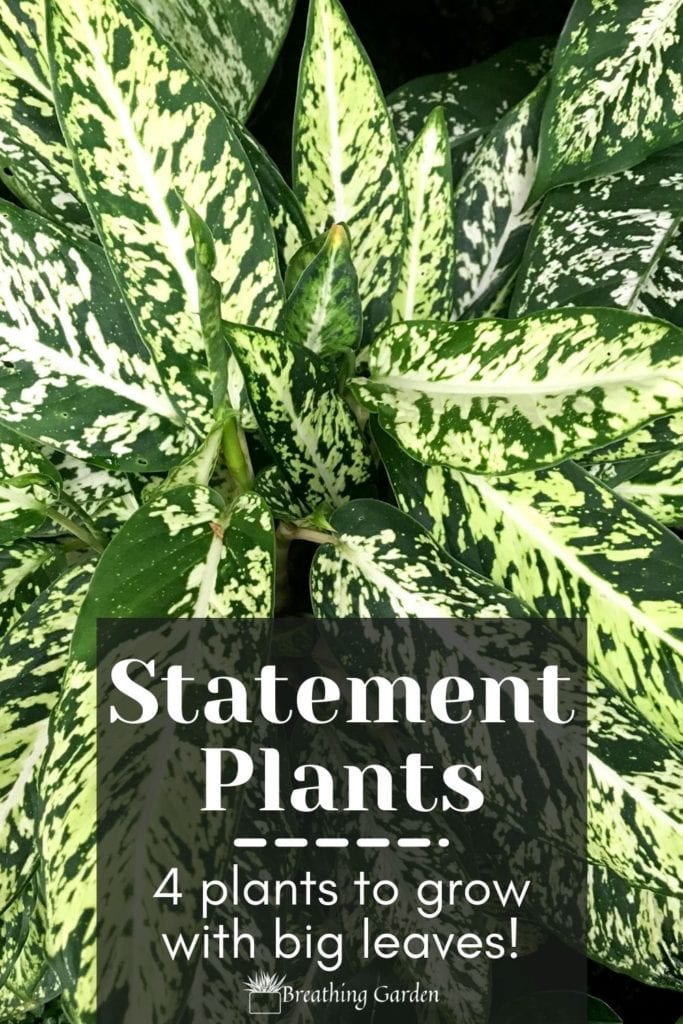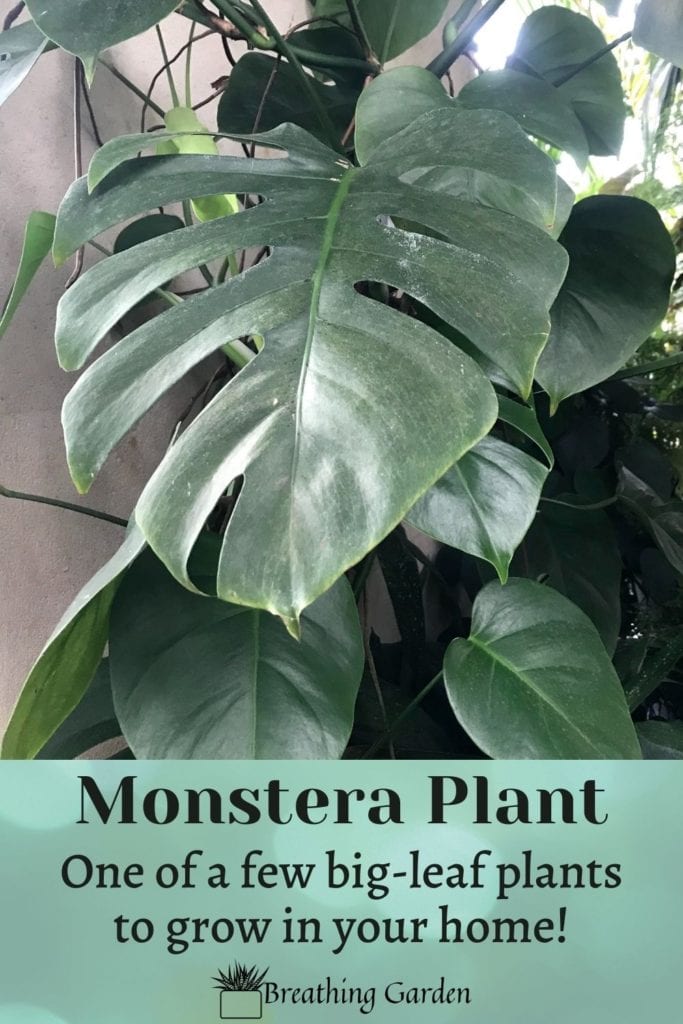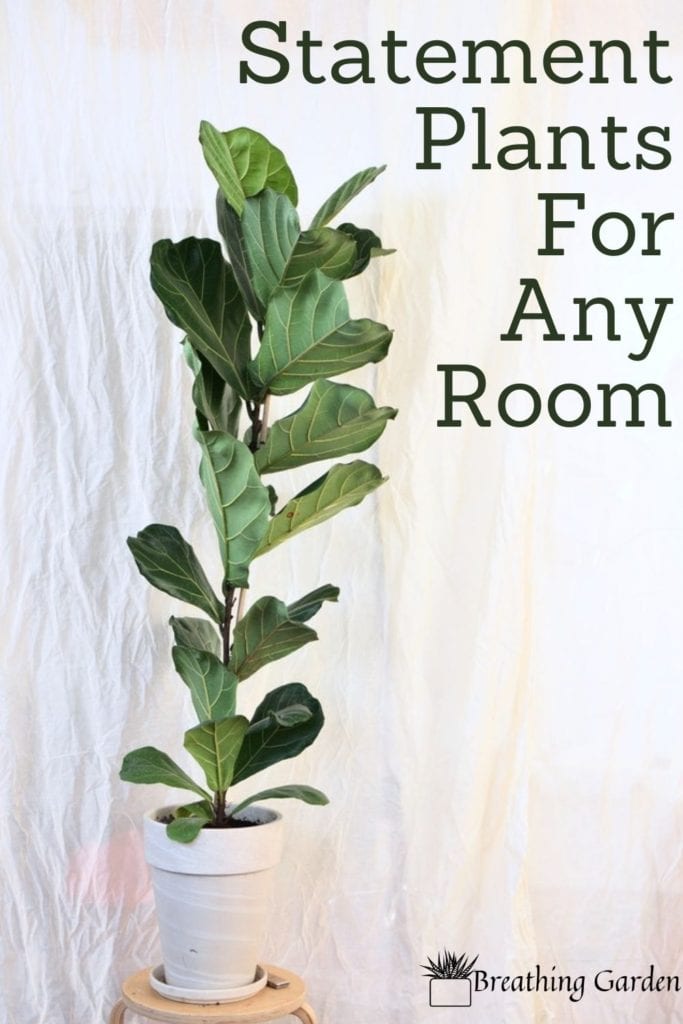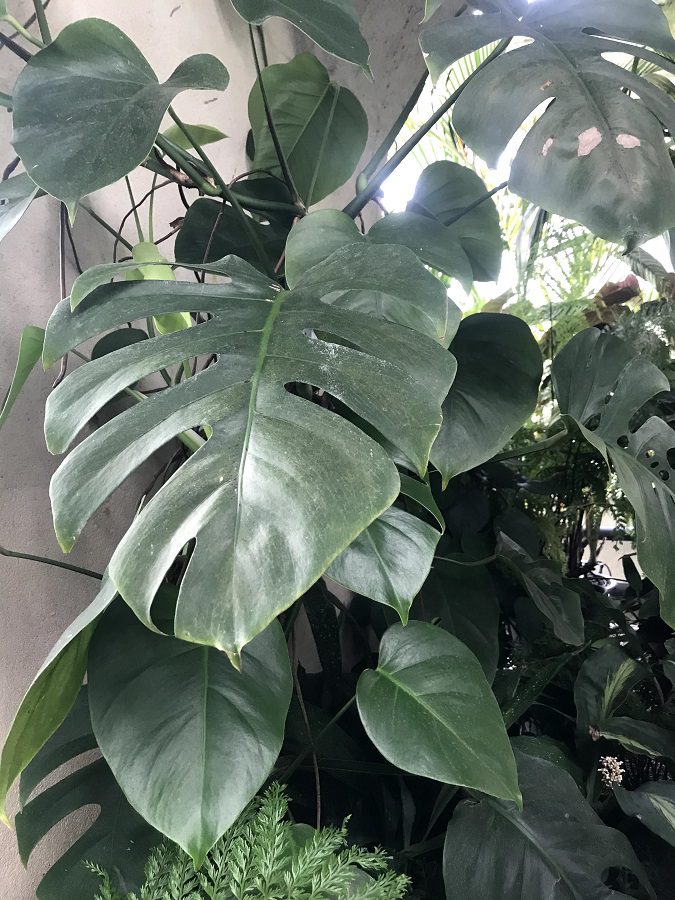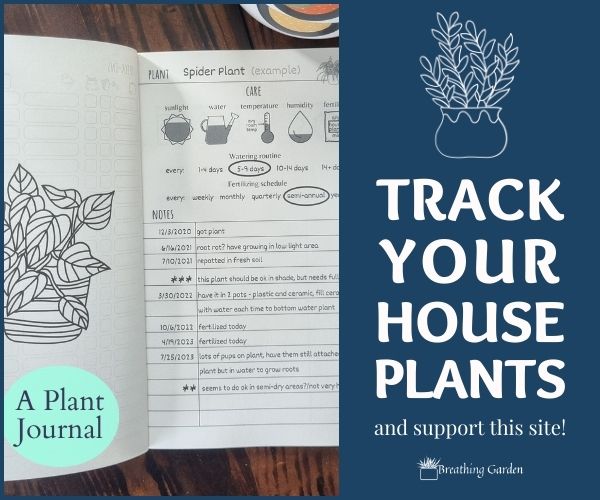Houseplants come in all shapes and sizes, but for a real statement, a homeowner might want to take a look at those houseplants with big leaves. It’s currently very popular to have these plants in any home, as they brighten up space as well as are eye-catching.
*This post may include affiliate links. When you purchase items from these links, we will receive a small commission, at no extra cost to you, to help support this website. Thank you for your support! Read more ->
The good news is that most of these large leaf plants are easy to take care of. Here are four gorgeous houseplants with big green leaves to consider:
1. Dumb Cane
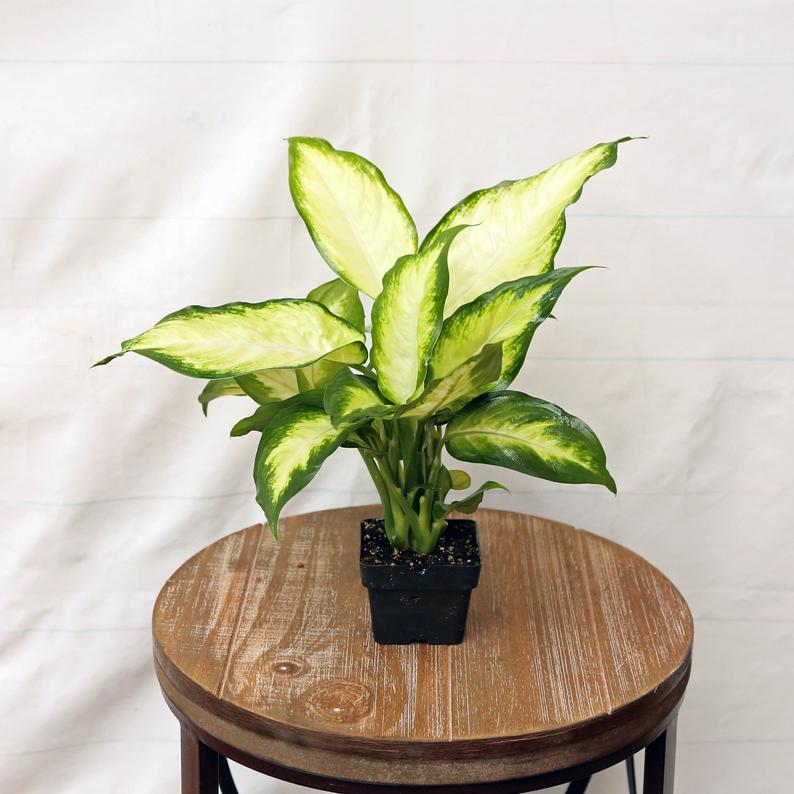
Also called the Dieffenbachia, this plant gets its common name because if its leaves are chewed on, they numb the mouth. Like the other large leaf plants mentioned here, it does best if it’s grown in a pot of well-draining soil and watered evenly.
The dumb cane also does best in bright but indirect light. This means that if there’s nowhere else to put the plant but in a window with a southern exposure, a sheer curtain should be placed over the window to keep the sunlight from being too strong. The plant should be kept in the same spot as much as possible but turned now and then to make sure it doesn’t become lopsided.
It does best with a high nitrogen but diluted fertilizer that’s applied during the spring and summer but discontinued during the cool months.
2. Dracaena
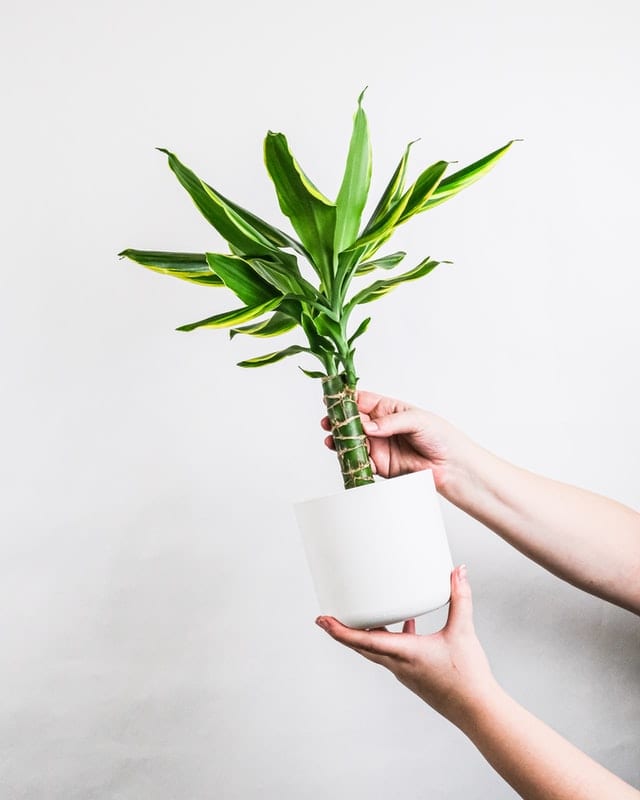
The dracaena is one of the more dramatic houseplants with big leaves. Its leaves are long and strap-like, and a mature plant reminds admirers of a tree. There are different types of dracaena plants, but if you’re looking for something truly eye-catching, you might consider the dragon tree. This plant can grow as high as 10 feet, but it’s fine to prune the plant if you don’t want it to get that tall, and has beautifully striped leaves.
The dracaena also thrives in bright but indirect light and well-draining soil. Water when the soil is dry, but plant experts warn against watering with tap water if you live in a city. You may want to water this plant with filtered water. It likes a bit of misting if the air in your home or office is too dry. Read for easy ways to keep plants in a humid environment!
3. Monstera
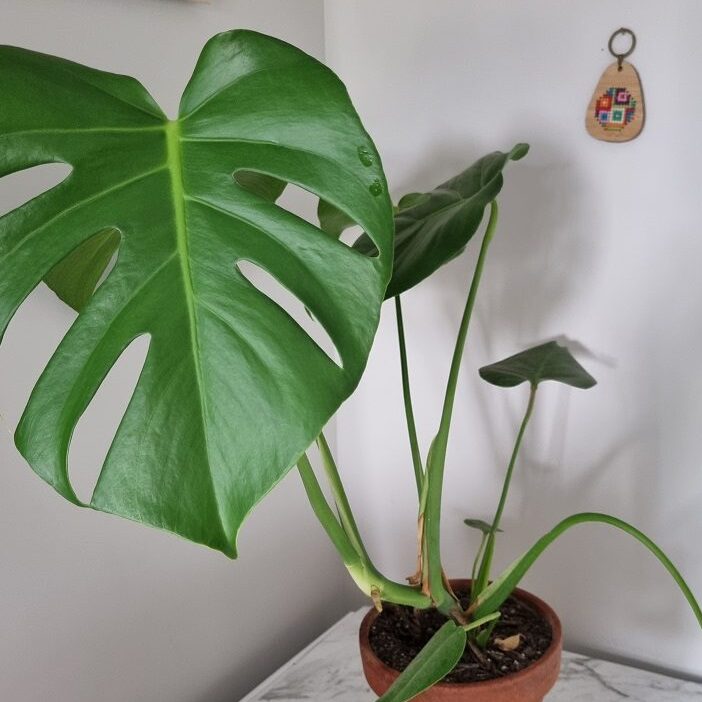
Also called the Swiss cheese plant because of the attractive holes or slashes in its huge leaves, this plant’s scientific name of Monstera gives you a clue to its growth habits. Indeed, it can grow not only very tall but very wide. The glossy green leaves can grow as wide as 2 feet.
This plant originated in the tropics and is one of the few members of its family, Araceae, that produces edible fruit. The houseplant won’t produce fruit but makes up for it with its beauty, heart shaped leaves, and ease of care.
The monstera does best in poor light, so it’s ideal for a room or an apartment where natural light is a premium. It needs a good deal of humidity, so misting the leaves is important. It should be watered every one to two weeks. (Find out if your plant is overwatered!)
The leaves can be kept dirt and dust free by sponging them off now and then. To keep the plant from overwhelming a room, it should not be repotted often and should be pinched back now and then.
4. Fiddle-leaf Fig
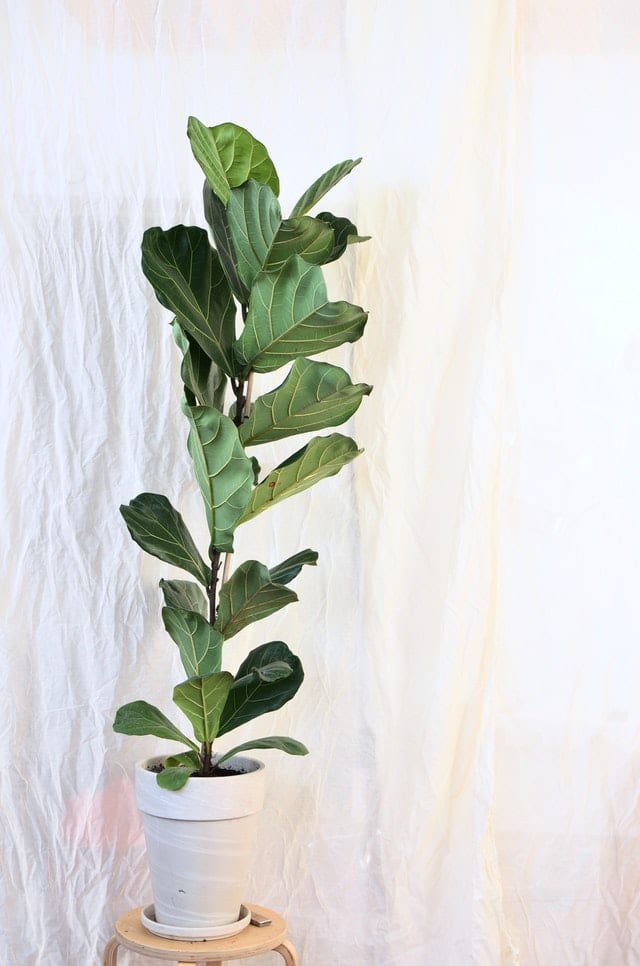
Another of the houseplants with big leaves, the fiddle-leaf fig is one of a number of species of figs that are used as houseplants. It gets its name because its big leaves are shaped somewhat like violins or fiddles. The plant itself can grow up to 6 feet tall, and like the monstera, it grows up other trees in the wild.
This plant is sensitive to drafts, so it needs to be placed in a place where the air is still and stable. It must have bright but indirect light, for too much direct sunlight will burn the leaves. Once the fiddle-leaf fig is placed in an area, it’s important not to move it. One way to keep the plant from becoming unbalanced is to turn it a bit after each watering to make sure that all the leaves get the same amount of light.
Like other houseplants with big green leaves, the fiddle-leaf fig should be watered when the soil becomes dry, then given enough water so that you see water come out of the drainage hole into the drip tray. As for fertilizing, feed the plant with an NPK, or nitrogen, phosphorus and potassium fertilizer once a month during the warm months. Don’t feed during the winter or fall.
Again, like the monstera, the leaves of the fiddle leaf benefit from a damp sponging every month or so. This not only keeps dust from the leaves but removes pests such as spider mites. The plant is also happy to be misted now and then, and if you don’t want it to grow out of control, repot it infrequently.
Which of these houseplants with big leaves are you going to start with? Looking for other house plants to grow that add a statement? Check out these plants with purple leaves.
Pin It!
Want to keep these plant ideas for later? Save them to Pinterest!
